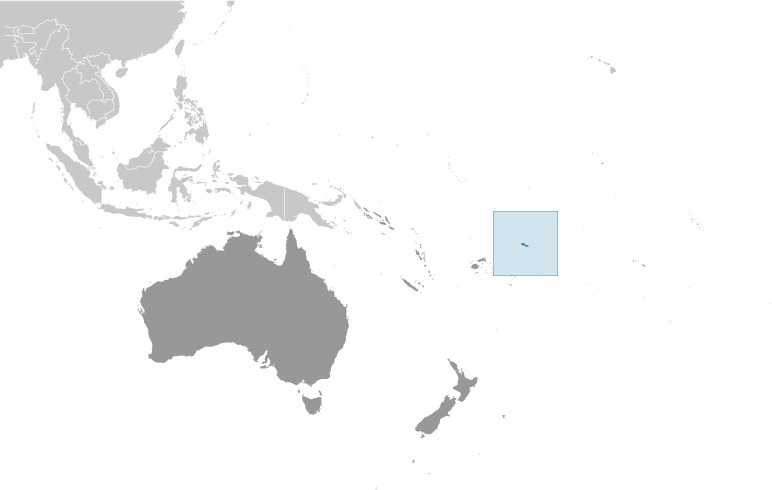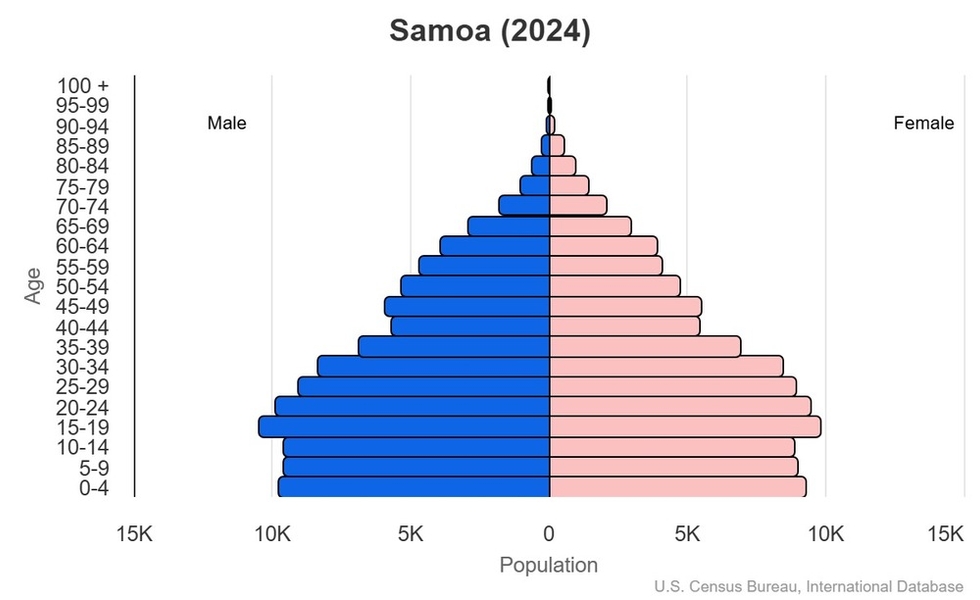Introduction
Visit the Definitions and Notes page to view a description of each topic.
Geography
People and Society
Population
comparison rankings: total 184; male 184; female 184
Median age
comparison ranking: total 158
Population growth rate
comparison ranking: 134
Birth rate
comparison ranking: 75
Death rate
comparison ranking: 184
Net migration rate
comparison ranking: 216
Maternal mortality ratio
comparison ranking: 65
Infant mortality rate
comparison ranking: total 87
Life expectancy at birth
comparison ranking: total population 124
Total fertility rate
comparison ranking: 77
Obesity - adult prevalence rate
comparison ranking: 8
Alcohol consumption per capita
comparison ranking: total 127
Tobacco use
comparison ranking: total 65
Children under the age of 5 years underweight
comparison ranking: 82
Education expenditure
comparison ranking: Education expenditure (% GDP) 43
Environment
Carbon dioxide emissions
comparison ranking: total emissions 195
Government
Economy
Real GDP (purchasing power parity)
comparison ranking: 202
Real GDP growth rate
comparison ranking: 5
Real GDP per capita
comparison ranking: 160
Inflation rate (consumer prices)
comparison ranking: 58
GDP - composition, by sector of origin
comparison rankings: agriculture 69; industry 182; services 28
Industrial production growth rate
comparison ranking: 57
Labor force
comparison ranking: 186
Unemployment rate
comparison ranking: 79
Youth unemployment rate (ages 15-24)
comparison ranking: total 104
Taxes and other revenues
comparison ranking: 10
Current account balance
comparison ranking: 81
Reserves of foreign exchange and gold
comparison ranking: 157
Debt - external
comparison ranking: 118
Energy
Electricity
comparison rankings: installed generating capacity 194; consumption 194; transmission/distribution losses 23
Energy consumption per capita
comparison ranking: 128
Communications
Telephones - fixed lines
comparison ranking: total subscriptions 201
Telephones - mobile cellular
comparison ranking: total subscriptions 189
Broadband - fixed subscriptions
comparison ranking: total 203
Transportation
Merchant marine
comparison ranking: total 155



